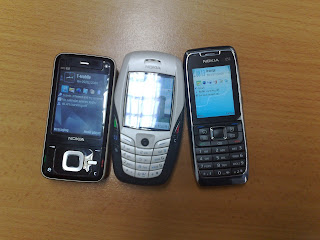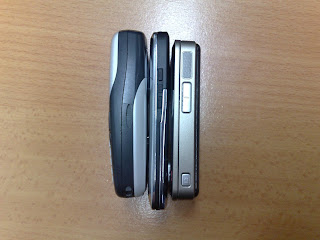See the Keynetik website for more
Edit: The original source for this is over at Symbian Freaks :)
The first title is Psiloc's IR Remote. IR Remote from Psiloc allows you to control multimedia devices such as TV, HiFi set, CD, VCR, and DVD players with your mobile phone. I suppose it's worth mentioning you actually need an IR port on your phone for it to work....
The second title is Smartmovie SmartMovie is a video player for Smartphones device, with a counterpart PC converter. With the converter, you may prepare any video clip for playback on your mobile device.
Third, we have PapyrusWith Papyrus you get a complete solution for managing your busy life. Papyrus is a complete management solution for S60 phones, offering several different smart-views and powerful tools for keeping track of a hectic schedule.
Fourth there is the excellent Profimail Profimail is a powerful e-mail client for S60 phones. It allows you to read your mail on the go and send text with attachments directly from your device. Send photos, recorded sound or simply text messages to friends from anywhere. One of my favourite applications.
And lastly, there is Handy Taskman Handy Taskman allows you to keep tabs on different applications you are running concurrently on your Symbian Smartphone.
It recognises programs that are running and checks the size of remaining memory left on the Smartphone (RAM, Phone memory and memory card). Just select the program and enter the first letter of its name to start it.
The requested program can be started from the full-screen display list of recently launched programs. With Handy Taskman one can switch back and forth between selected programs, shut them off, delete them or shut off the whole group. The program compresses the applications in the working memory of the Smartphone to do this.
Click on the software titles to be taken directly to the product page, for more information. During the cart process you will need a code to obtain your 20% discount, the code you will need is 1230065120091FD
The offer runs until 31st January
Nokia's bet is that the sheer size of the Qt 4-based market will be a decisive inducement for everyone else, handset makers, operators, and pure applications players alike, and that the explosion in compatibility will amplify the market for everyone much as happened on the desktop when MS-DOS anointed the PC architecture. But unlike then, Qt 4 will break forever the idea that one part of the market can seal itself off as a profitable mini-universe, an idea as archaic in the 21st century as the feudalism it so closely resembles.
Nokia today announced that the Nokia N95 8GB had the distinction of being the first ever mobile phone to receive Digital Living Network Alliance (DLNA) certification. The DLNA is a body advocating the interoperability of wired and wireless consumer devices. For the consumer, this accolade translates into convenient and intuitive connectivity between your DLNA Certified home electronics devices, personal computers, and your Nokia N95 8GB.
DLNA technology enables multi-vendor home ecosystems of consumer devices by building a common connectivity platform for a variety of multimedia experiences. This vision is fully in line with the Nokia's aspiration for openness and seamless interoperability between devices and services from different brands.
DLNA has certified the Nokia N95 8GB as a Mobile Digital Media Server, an acknowledgment that taps into the genius of this multimedia computer. The extensive connectivity and cutting-edge media capabilities of the Nokia N95 8GB are ideal for enjoying content, such as music, photos or videos, wirelessly on other devices in the home environment.
"We are thrilled to receive this tribute from the DLNA. The Nokia N95 8GB is truly a masterpiece of a multimedia computer, and a prime example of the direction mobility is taking - it's personal, powerful and fits seamlessly into your life inside and outside the home," said Anssi Vanjoki, executive vice president, Markets, Nokia.
DLNA has already certified over 1800 products in the personal computer and consumer electronic categories, but this is the first time the stringent guidelines for interoperability set by the DLNA have been met by a mobile phone. Mobile devices were included in the DLNA Networked Device Interoperability Guidelines that were published in early 2006, and are now part of the recently launched DLNA certification program. The Nokia N95 8GB passed DLNA's rigorous testing process to receive the green DLNA Certified logo, a marker of its leading position in the mobile domain of the digital home.
With up to eight gigabytes of built-in memory, the Nokia N95 8GB can hold a vast selection of your favorite media content, like those ski vacation photos and your music collection. You can share these with your friends and family on a DLNA Certified home entertainment system and enjoy your photos on a full-sized TV screen or jam to those tunes on your home stereo system. All you need to do is share the content wirelessly from your Nokia N95 8GB.
Nokia is an active member of the DLNA and has been driving interoperability of mobile, PC, and consumer electronics devices at and beyond home. As mobile phones have converted into diverse multimedia computers, they serve as the primary gateway to the Internet, services and content for millions of people around the world. Nokia is mobilizing home multimedia content and enabling remote access to home content using your Nokia mobile devices.



